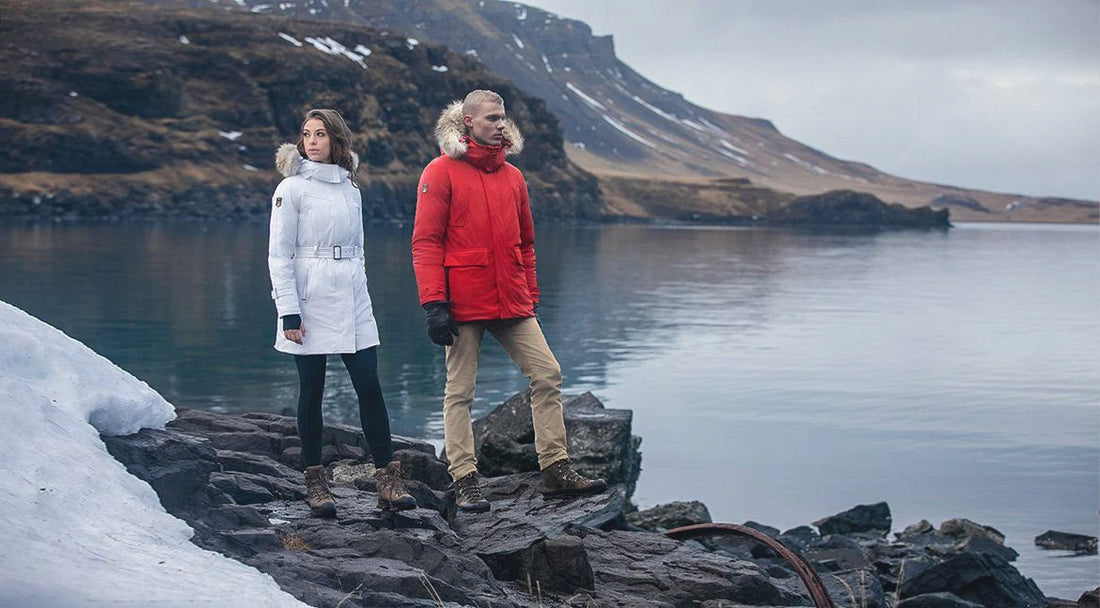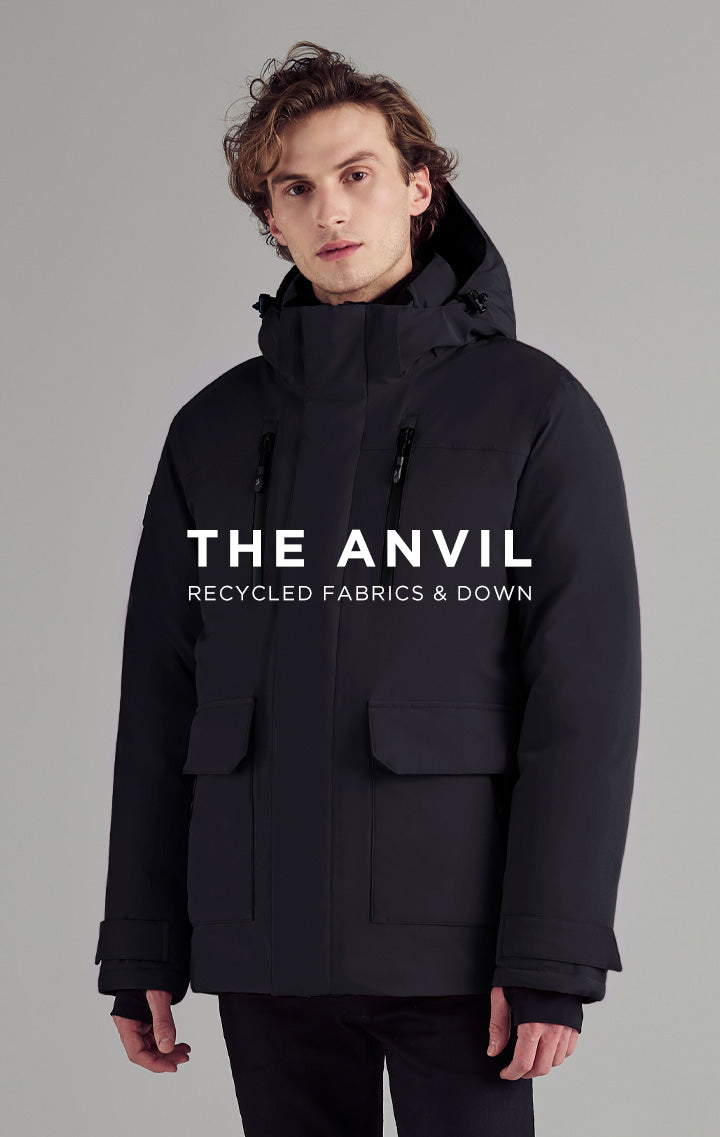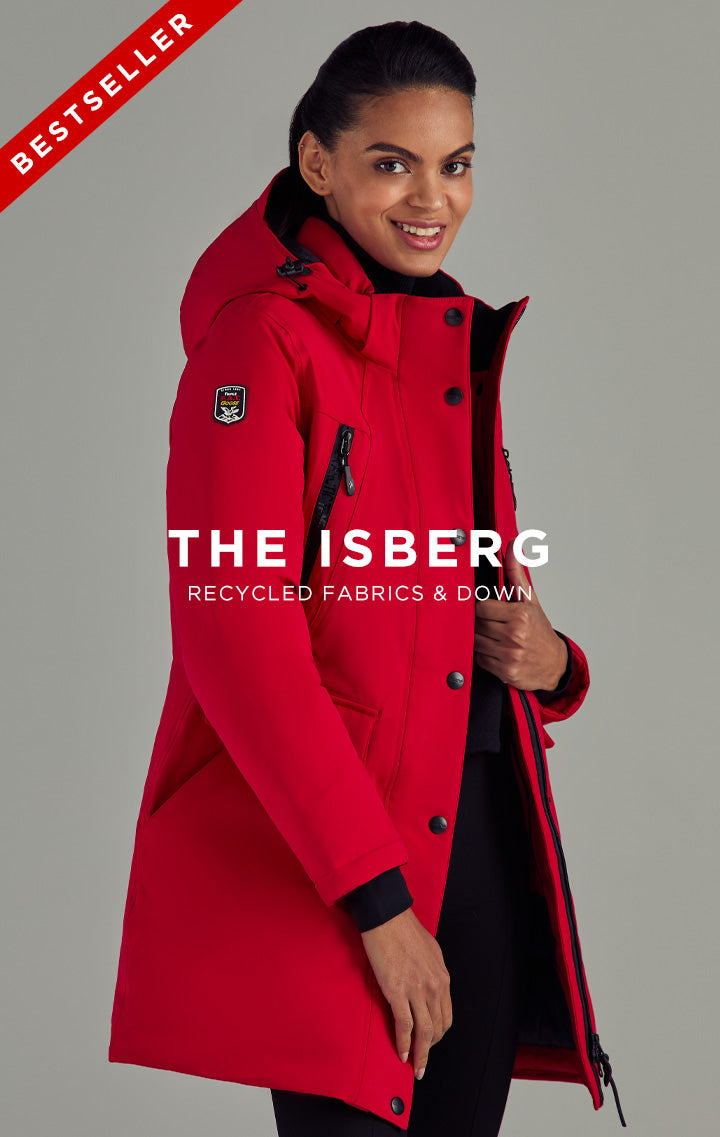A high-quality down jacket is a welcome addition to any wardrobe, providing an amazing level of protection from some of the worst weather conditions imaginable. But a good parka isn’t a small investment, with some jackets costing hundreds or even thousands of dollars. Deciding which one is right for you can be a real challenge that requires careful consideration, particularly when there are so many options to choose from.
To help you sort through all of those choices, and make a more informed decision, we’ve come up with a list of the most important things to consider when buying a parka of your own. As it turns out, not all of these jackets are created equal, but armed with a bit of extra knowledge, you’ll have a better understanding of what you should be looking for when you decide to go shopping.

The Truth About Temperature Ratings
One of the first things you’ll want to consider when you begin shopping for a parka is when and where you’ll be using it. Will this be a jacket to keep you warm as you commute back and forth from work in the winter? Will you use it for cold weather hikes or camping excursions? Is an Antarctic expedition in your future? Knowing the conditions and climate that you’ll be wearing your jacket in will play a big role in deciding which one you should buy.
Most parkas come with a “temperature rating,” which serves as an estimate of the lowest temperature at which the jacket will keep you warm. Those who live in cold—but not extremely frigid—locations may be able to get away with a lighter jacket that has a higher temperature rating of say 20ºF (-6ºC). Those who live in places where it can get very cold, however, will want a jacket that has an appropriate rating for where they’ll be using it. In Arctic conditions the temperature rating might be as low as -40ºF (-40ºC) for instance.
The problem is, the temperature rating for a jacket is an extremely subjective number, as comfort levels vary wildly from person to person. Factors such as body type, genetics, metabolism, medical history, and other variables can all play a role in determining someone’s tolerance for the cold. In other words, a jacket that might be plenty warm for one person might not be quite so effective for someone else. This makes it next to impossible to accurately judge just how well a jacket can keep any single person warm in cold conditions.
Additionally, temperature ratings simply can’t take into account things like wind chill, humidity, or other weather conditions that can have an impact on our comfort levels when outdoors. Because of this, a jacket that is rated to perform well at 20ºF (-6ºC) may not be all that effective if the wind is howling and snow is blowing.
Because of all of these factors, temperature ratings remain unreliable at best. There are simply too many subjective variables to account for to make these ratings useful in a meaningful way. Here at Triple F.A.T. Goose, instead of using these imperfect ratings, we rely on our customer reviews to provide relatable temperature experiences for our products because nobody understands the product better than the people wearing them.

How Fill Power and Down Weight Impact Warmth
While a down parka’s temperature rating can offer some insights into how well it will perform in cold conditions, there are a few other important numbers to consider too. Most manufacturers will provide details on the down used in the jacket, which can vary greatly in terms of quality, quantity, composition, and type. The numbers that are the most important in this regard are the garment’s fill power and down weight.
Fill power is an indication of the quality of the down used as insulation in a jacket, which is impacted by the down’s loft. The fill power rating is expressed as a number that typically ranges from as low as 300 up to 900+. This number is determined by a test that measures how many cubic inches a single ounce of down will fill. Higher quality down, with more loft, fills more space, making it much more thermally efficient. To put in simpler terms, the higher the fill power rating, the warmer a jacket should be.
When buying a down parka, look for a fill power rating of at least 600. Anything lower than that runs the risk of not performing well in cold conditions. Keep in mind, jackets with a higher fill power rating will almost certainly be warmer, but they will also tend to cost more too. Finding the proper balance between price and performance is important when deciding which parka to purchase.
Fill power isn’t the only number you’ll want to consider when shopping for a down jacket, however. If possible, you’ll want to determine the down weight too. Not every manufacturer shares this number, so don’t be surprised if it isn’t listed in a jacket’s description. As the name implies, the fill weight of a parka is an indication of how much the down used in its construction actually weighs. This is important because a jacket that features down with a lower fill power that is used in higher quantities, could be just as warm—or even more so—than a jacket that has a high fill power, but uses less down.
At Triple F.A.T. Goose, our goal is to be completely transparent with our customers, which is why you’ll find the fill power and down weight of all of our jackets clearly displayed. For example, from our men's collection, the Staden Parka features 15 ounces of premium recycled down insulation with a 750 fill power rating. Meanwhile, the women's Valenti Long Down Puffer includes 15.5 ounces of 750 fill power recycled down.
Learn more about Triple F.A.T. Goose, a brand with a 35 year history that has been featured in Outside, Esquire, Vogue, Elle, Men's Journal, Cosmopolitan, Robb Report, and more. All Triple F.A.T. Goose coats have a fill power rating of 675 and up. Shop the collection.
SHOP TRIPLE F.A.T. GOOSE
Retail Price and the Real Cost of a Down Parka
Price is always an important factor to consider when making any substantial purchase, and a down parka is no different. If you’ve ever shopped for one of these jackets, you’ve no doubt come across a few brands that offer their products at a decidedly premium price. Often this is due to what is known as the “retail mark-up”, which is essentially a brand’s cost of doing business with retail outlets. Obviously, that mark-up has a direct impact on how much consumers end up paying for the parka, significantly adding to their cost.
When it comes to high-end apparel, it is not uncommon for the retail price to be marked up to at least twice the wholesale cost. In other words, if a down parka carries a price tag of $400 in a department store, the retailer probably paid roughly $200 to buy that product from the supplier. This provides a substantial enough profit margin to allow stores to cover their operating costs and stay in business, with a bit of wiggle room to offer discounts from time to time.
Most manufacturers are reluctant to raise their wholesale prices because it usually results in higher prices for consumers too. Instead, a brand will look for other ways to increase its profit margin, usually by finding ways to reduce the cost of manufacturing instead. For a company that makes parkas, that could mean using less insulation in their jackets, switching the down to a lower fill power rating, or using cheaper materials in the construction process. The hope is that consumers won’t notice those changes and will continue to buy the jackets at the same price while the manufacturer reaps increased profits.
As a direct-to-consumer brand, Triple F.A.T. Goose takes a much different approach. By selling our products directly to our customers, we eliminate the retail middleman. This allows us to produce luxury quality down parkas that can be sold at reasonable prices without the need for the “retail mark-up.” This translates into a better jacket for less money than you’ll find just about anywhere else.

The Features to Look for in the Perfect Down Parka
Sorting through all of the different down parkas available today can quickly become an overwhelming experience. There are so many jackets to choose from that finding the right one for you can feel like an uphill battle. This is especially true when you factor in the wide range of price points that those jackets encompass.
Many of the options that are available offer only the most basic of features however, making them easy to rule out if you’re looking for a jacket you can count on to keep you warm and dry. The best models will include such amenities as storm cuffs that prevent moisture from reaching the interior or pit vents to help improve ventilation and release excess heat. A fur-trimmed hood is also a common trait on a well-designed parka too, providing additional warmth and protection for the wearer’s face.
What truly separates a premium parka from its lower-cost competition is the overall quality of the materials used in its construction. The caliber of the fabrics, down, fur, zippers, and other components are drastically different in a high-end jacket from a premium brand, creating a product that performs dramatically better in terms of warmth, comfort, and durability.
By leveraging our direct-to-consumer model, Triple F.A.T. Goose doesn’t have to cut corners when it comes to manufacturing our down parkas. Because of this, we can use nothing but the best materials when manufacturing our products without adding a steep markup to the price. This gives us a competitive advantage over rivals, but more importantly, it gives our customers a premium product that won’t break the bank.

Waterproof or Water-Resistant?
When shopping for your perfect down parka it is important to note whether or not the jackets you are considering are waterproof or water-resistant. The two terms may sound very similar, but the reality is, they have very different meanings. Which one you choose could have a dramatic impact on how comfortable you are while outdoors.
When a jacket manufacturer lists a product as “water-resistant,” that means that the fabrics used in its construction can prevent mist, light rain, or light snow from soaking through the material for a short duration. These types of garments offer less protection from moisture than those that are “waterproof,” although they also tend to be thinner, lighter, more breathable, and more affordable too.
Conversely, a parka that is described as “waterproof” should be able to provide an exceptional level of protection against moisture, keeping the wearer dry even in torrential downpours and a full-blown blizzard. The fabrics used to create a waterproof jacket are usually thicker, less breathable, and pricier, which of course results in a more expensive jacket too.
But it usually takes more than just technical fabrics to make a jacket waterproof. Most manufacturers will also apply a durable water repellant (DWR) coating to the outer shell in order to add extra moisture protection. They’ll also typically use some form of seam sealing as well, which is a process that keeps moisture from passing through the stitching that holds the jacket together.
Staying dry is one the best ways of also staying warm while outside in cold and damp conditions. A waterproof parka will be able to do that in a more consistent manner as compared to one that is water-resistant, albeit at a higher price and a heavier weight. The bottomline is that if you live in—or are visiting—a wet environment, go for the added protection of waterproofing. On the other hand, if you only encounter very minimal amounts of rain or snowfall, and value lower weight and improved breathability, a water-resistant jacket just might be the right choice for you.
At Triple F.A.T. Goose, all of our parkas and jackets are either water-resistant or waterproof. The product descriptions for each of our garments clearly lists which of those categories that it falls into, making it easier to understand exactly what you’re buying. For example, both the Hodgson and Anvil parkas are waterproof, while the Reizen Jacket and Everton Puffer are water-resistant. Meanwhile, from our women's collection, the Gravina and Isberg are waterproof, while the Fara and Balleny are water-resistant.
Hopefully the information presented here will be of assistance when it comes time to purchase a down parka of your own. By keeping these factors in mind as you weigh all of the options, you’re almost guaranteed to find a jacket that will exceed even your loftiest of expectations. One that will accompany you on many adventures to come.





